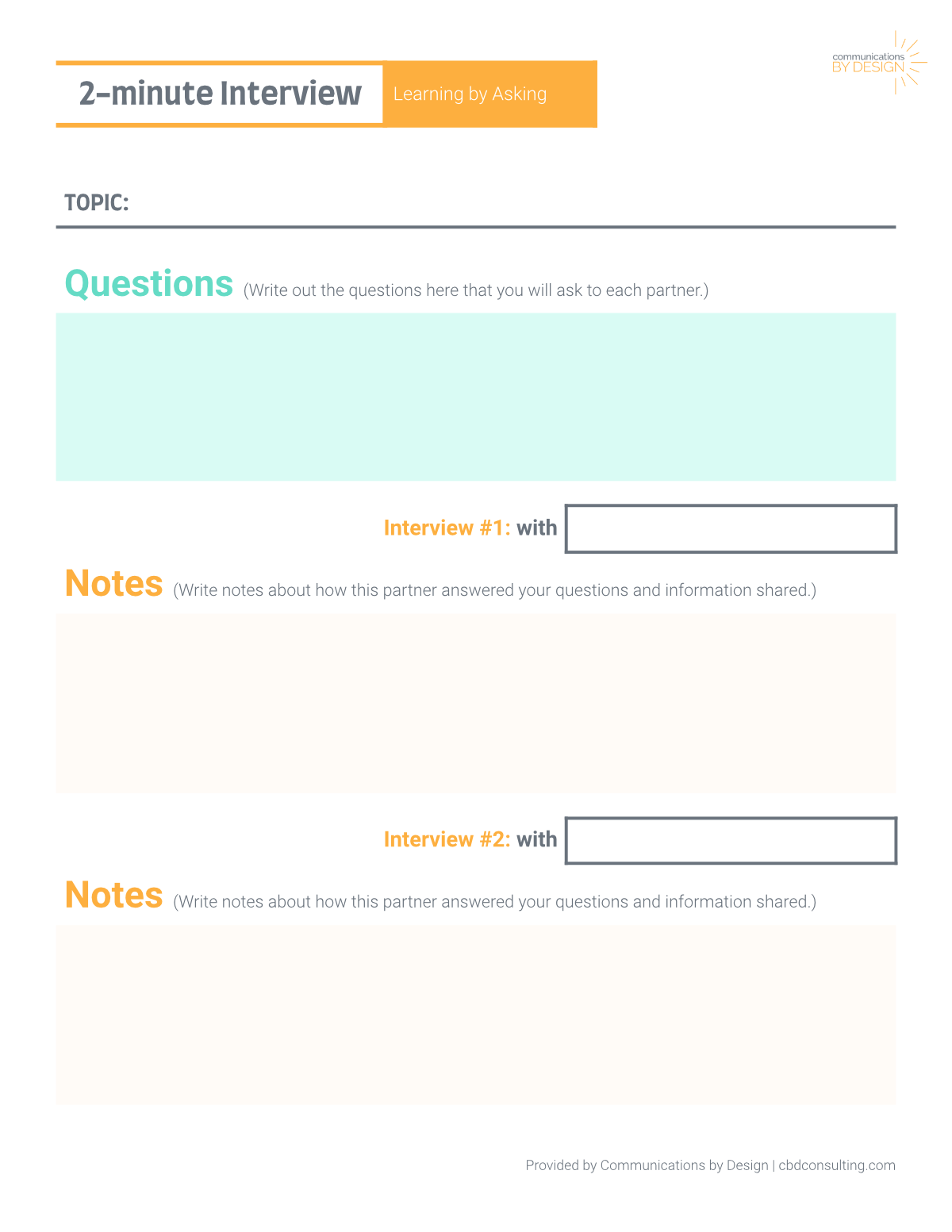
I was recently discussing with several teachers the topic of student inquiry. Namely, we were brainstorming ways to cultivate curiosity and wonder in students. Every turn of the conversation ultimately arrived at the same core experience: how might students ask and answer content-focused questions that are interesting to them?
We were initially hung up on the idea that students don’t want to ask questions. However, further discussion suggested that while engagement and motivation is the core obstacle in all things teaching and learning, it wasn’t the problem we were trying to solve at that moment. For student inquiry to even be possible, we needed to provide organized, meaningful opportunities for asking and answering interesting questions.
That discussion and others like it have led to strategies like the following: Know/Need-to-know, Inquiry Boards, and the 2-minute Interview.
Student Inquiry Strategy: Know/Need-to-know
Those familiar with Project-based Learning are not surprised by the addition of this strategy to the student inquiry list. Know/Need-to-know (K/NTK) is a student-driven activity that focuses on recognizing prior knowledge and identifying and filling knowledge gaps.
To implement the strategy, most teachers use a simple two-column anchor chart (paper or digital). They write Know on one column and Need-to-know on the other. Students then offer thoughts for both sides of the chart based on the topic in question. Ideally, the topic is phrased as a question so that students are responding to the question.
Much of the time, the process begins individually, then moves to partners or groups, and eventually results in whole-class sharing. In this way, students have a chance to think through their own ideas, discuss at length in intimate groups, then create a whole-class anchor chart based on those thoughts and discussions.
Teachers also will often encourage students to keep their own individual K/NTK chart during the topic of study, especially for older students.
Take a look at an example template below and learn more about this strategy in our Instructional Strategies Library.
Student Inquiry Strategy: Inquiry Boards
Along a similar vein, the Inquiry Boards strategy has evolved from the idea of giving students opportunities to express interests and desires about a topic. In its most basic form, the Inquiry Boards strategy presents a topic and asks students to brainstorm questions that connect or relate to the topic.
The teacher encourages students to consider any and all questions that may relate, even loosely. The initial stages of the activity are intended to be divergent in nature. For example, a lower elementary classroom might be given the topic statement: “The sun gives living things energy.” Students in this class then start asking questions like “How does the sun give energy?” but might also ask something like “Does the sun give my dog energy?” and “Is my dog a living thing?”
In that example, the teacher would naturally be very interested in including all of the above questions because all of them are essential to understanding the topic.
With the questions having been shared, the teacher might ask students to try to categorize the questions (or perhaps model that for them). Inevitably, many questions will be redundant. This does not discount them but rather further fuels the effort because then students may be able to answer their own questions later that related differently in terms of nuance to a shared topic.
To best foster curiosity, though, the use of this strategy ought to extend into all aspects of the time spent addressing the topic. Once the questions are asked and organized, the class should continue to return to the board to both add more questions and add insights and information to existing questions to begin providing answers. The eventual goal of the strategy is for students to be able to select questions from the board that they want to attempt to answer, either individually or in groups (or both).
Students may write responses to questions, drawing on lessons and classroom materials. They may also record responses in videos to be shared with the class or posted directly to the Inquiry Board if digital.
The strategy is usually performed via either a large wall space in the classroom or a scalable digital tool that allows students to post and respond to existing posts. Tools like Padlet tend to be favorites for teachers.
Student Inquiry Strategy: 2-minute Interview
Because both of the above strategies tend to be rather large in scale and use, consider the next strategy for situations desiring more of a single activity. The 2-minute Interview is a partner activity where students adopt the role of either interviewer or interviewee based on a given topic or class prompt. (For a student organizer template, see below.)
Each student will eventually adopt both roles, so students are all encouraged to follow each step. First, students generate questions they will ask their partners. The questions are intended to help them learn more about the topic or the student with the eventual intent of compiling and sharing or presenting what they have learned.
Once interviewers are ready with questions, the teacher sets a timer and the interviewer asks the questions. The interviewee partner is charged with attempting to answer the questions as well as possible. For a content-focused activity, that means that students are likely supposed to be gathering information on a topic to be the resident expert of that content.
After the partners switch roles and proceed again, the teacher then rotates partnerships so that students have a new pairing and repeat the process. Depending on the structure and desired outcome, students may repeat several times.
Once the process is complete, each student individually compiles the information from their interview notes and either presents or shares. The strategy, then, is an exercise in developing questioning, note-taking, discussion, and presentation skills.
This process functions well as a method of implementing a Jigsaw Activity or some other format that involves having groups of students master a concept to be shared with their peers.
Cultivating Inquiry
While strategies like these help grow a culture of inquiry in our classrooms, it is also true that inquisitiveness is dispositional at times, and questioning is itself a skill. We should expect students to at times both resist and fail. Teachers routinely express frustrations during the early stages of an effort to grow inquiry in their classrooms. However, in every case, at least of which I am personally aware, when inquiry is the expectation and built into the fabric of the classroom experience, skills grow and dispositions shift.
In our minds, the only question that needs asking is whether inquiry is a worthwhile pursuit. If so (and we believe it is), these strategies should help!




